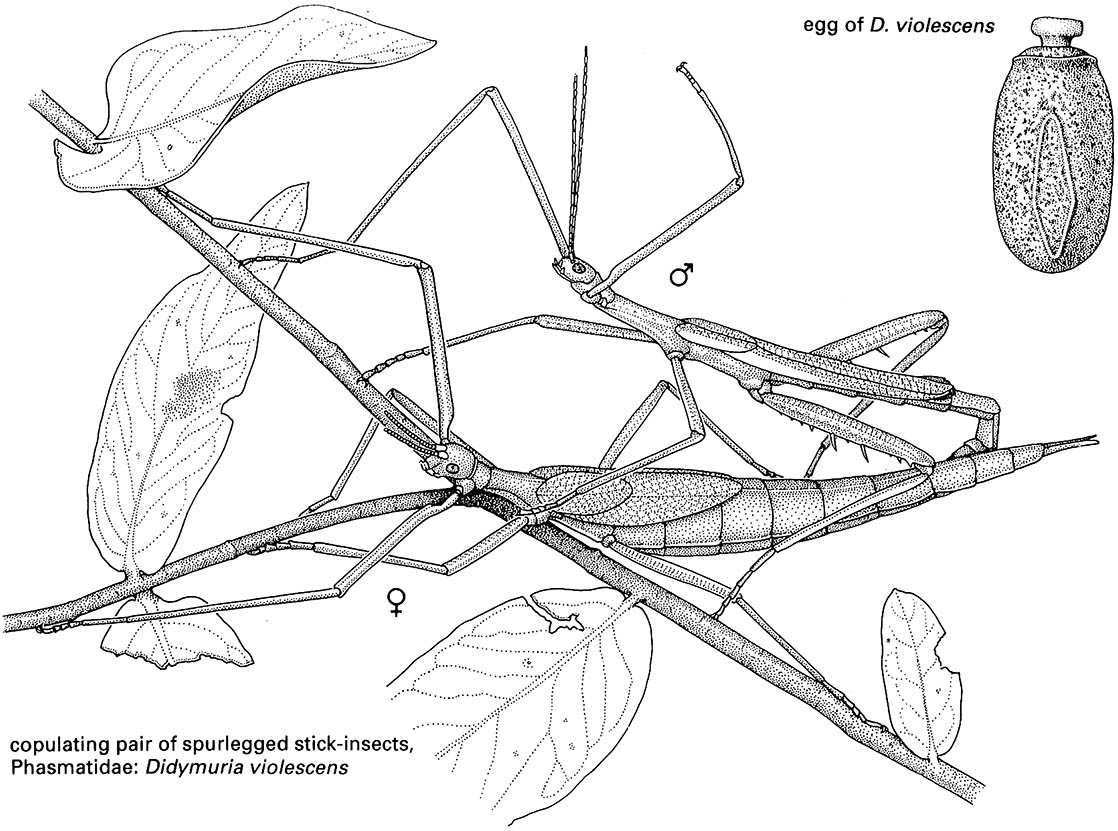Box 11.6. Phasmatodea (phasmatids, phasmids, stick-insects or walking sticks)
The Phasmatodea is a worldwide, predominantly tropical order of more than 3000 species that is lacking a phylogenetically based classification. They have hemimetabolous development, and are elongate cylindrical and stick-like or flattened and often leaf-like in form, up to >30 cm in body length (the longest species has a total length, including legs, of about 50 cm and is from Borneo). They have mandibulate mouthparts. The compound eyes are anterolaterally placed and relatively small, and ocelli occur only in winged species, often only in males. The antennae range from short to long, with 8–100 segments. The prothorax is small, and the mesothorax and metathorax are elongate if winged, shorter if apterous. The wings, when present, are functional in males but are often reduced in females; many species are apterous in both sexes. The fore wings form leathery tegmina, whereas the hind wings are broad, with a network of numerous cross-veins and the anterior margin toughened as a remigium that protects the folded wing. The legs are elongate, slender, gressorial, with five-segmented tarsi; they can be shed in defense (section 14.3) and may be regenerated at a nymphal molt. The abdomen is 11-segmented, with segment 11 often forming a concealed supra-anal plate in males or a more obvious segment in females; the male genitalia are concealed and asymmetrical. The cerci are variably lengthened and consist of a single segment.
In the often prolonged copulation the smaller male is astride the female, as illustrated here for the spurlegged stick-insect, Didymuria violescens (Phasmatidae). The eggs often resemble seeds (as shown here in the enlargement of the egg of D. violescens, after CSIRO 1970) and are deposited singly, glued on vegetation or dropped to the ground; there may be lengthy egg diapause. Nymphal phasmatids mostly resemble adults except in their lack of wing and genitalia development, the absence of ocelli, and the fewer antennal segments.
Phasmatodea are phytophagous and predominantly resemble (mimic) various vegetational features such as stems, sticks, and leaves. In conjunction with crypsis, phasmatids demonstrate an array of anti-predator defenses ranging from general slow movement, grotesque and often asymmetrical postures, to death feigning (sections 14.1 & 14.2).
Phylogenetic relationships are considered in section 7.4.2 and depicted in Fig. 7.2.


Broken lines indicate uncertain relationships. Thysanura sensu lato refers to Thysanura in the broad sense. (Data from several sources)



